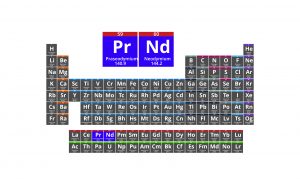St George Mining has raised investor confidence that the WA explorer has made a long-awaited fifth nickel-copper sulphide discovery with news of exceptional high-grade hits at its Mt Alexander project in the Goldfields.
News this week that drill hole MAD199 had intersected 10.96m of continuous nickel-copper sulphides, which returned average XRF readings of up to 7.34% nickel and up to 4.74% copper, at a depth of about 340m sent St George (ASX: SGQ) shares up as much as 52% to 11¢.
By last night, St George shares were trading at 9.9¢ for a 34% gain for the week, an exceptional outcome, amid hopes MAD199 will prove to have found the long-awaited fifth high-grade nickel-copper sulphide orebody at Mt Alexander, west of Leonora.
True grades will be revealed once laboratory assays are returned.
MAD199 drilled a target between the Investigators deposit – one of four along a 5.5km strike that also includes Stricklands, Cathedrals and Radar – and the West End target.
Drilling is now underway with MAD200, 500m west of where MAD199 was drilled, to test an anomaly picked up at West End.
In other news:
-
Torrens Mining Elizabeth Creek Copper Project Joint Venture Commences
-
Zenith Minerals New Results Extend High-Grade Gold Zones At Red Mountain
-
Buru Energy confirms rig contract for major Canning Basin drilling campaign
-
Focus Minerals announces updated Laverton Stage 1 open pit PFS progressive results & AGM Notice
High-grade nickel-copper sulphide deposits are proving difficult to find across Australia, not helped by a topsy-turvy nickel price that does not consistently encourage investment with the drill bit. However, the macro factors in favour of nickel are strong, particularly given its increasingly prominent role as a core battery metal to feed the clean energy revolution.
At more than 300m below surface, MAD199 is the first hole at Mt Alexander to intersect high-grade mineralisation at depth, and the deepest massive nickel-copper sulphides identified in the Cathedrals Belt.
It is an important milestone for St George and goes a long way to confirming its interpretation that the large intrusive mineral system at the Cathedrals Belt can host significant mineralisation at depth.
“This is very favourable for the potential continuity of the mineralisation at depth,” Gavin Wendt wrote in his Mine Life Resource Bulletin.
“With multiple intersections of high-grade nickel-copper sulphides over a broad area and favourable project economics, Mt Alexander is emerging as a major new nickel sulphide camp in Western Australia.
“The composition of the mineralisation within the Cathedrals Belt, comprising an elevated copper-nickel ratio, cobalt and PGE values and basalt host rocks, is more akin to an intrusive mineral system – like Raglan, Voiseys Bay and Norilsk – rather than typical Kambalda-style extrusive deposits.”
St George Mining executive chairman John Prineas described the MAD199 intersection as outstanding and potentially indicative of the presence of a large accumulation of mineralisation.
“The success with MAD199 extends the strike length and is enormously encouraging as we continue to prove up further nickel-copper mineralisation along the Cathedrals Belt,” he said.
“Mineralisation of the kind that we have at Mt Alexander is very rare – the combination of high-grade nickel, copper, cobalt and platinum group metals is simply not seen anywhere else in Western Australia, or Australia for that matter.
“We look forward to further results with downhole EM surveys in progress and drilling continuing 24/7.”
Drilling of MAD200 is underway. It is planned to a depth of 600m and will test a broad SQUID MLEM anomaly. Three discreet and strong conductors were identified in the DHEM survey at nearby hole MAD196. MAD200 is part of an aggressive 2021 campaign by St George to systematically explore Mt Alexander and add to already discovered high-grade sulphide mineralisation.



